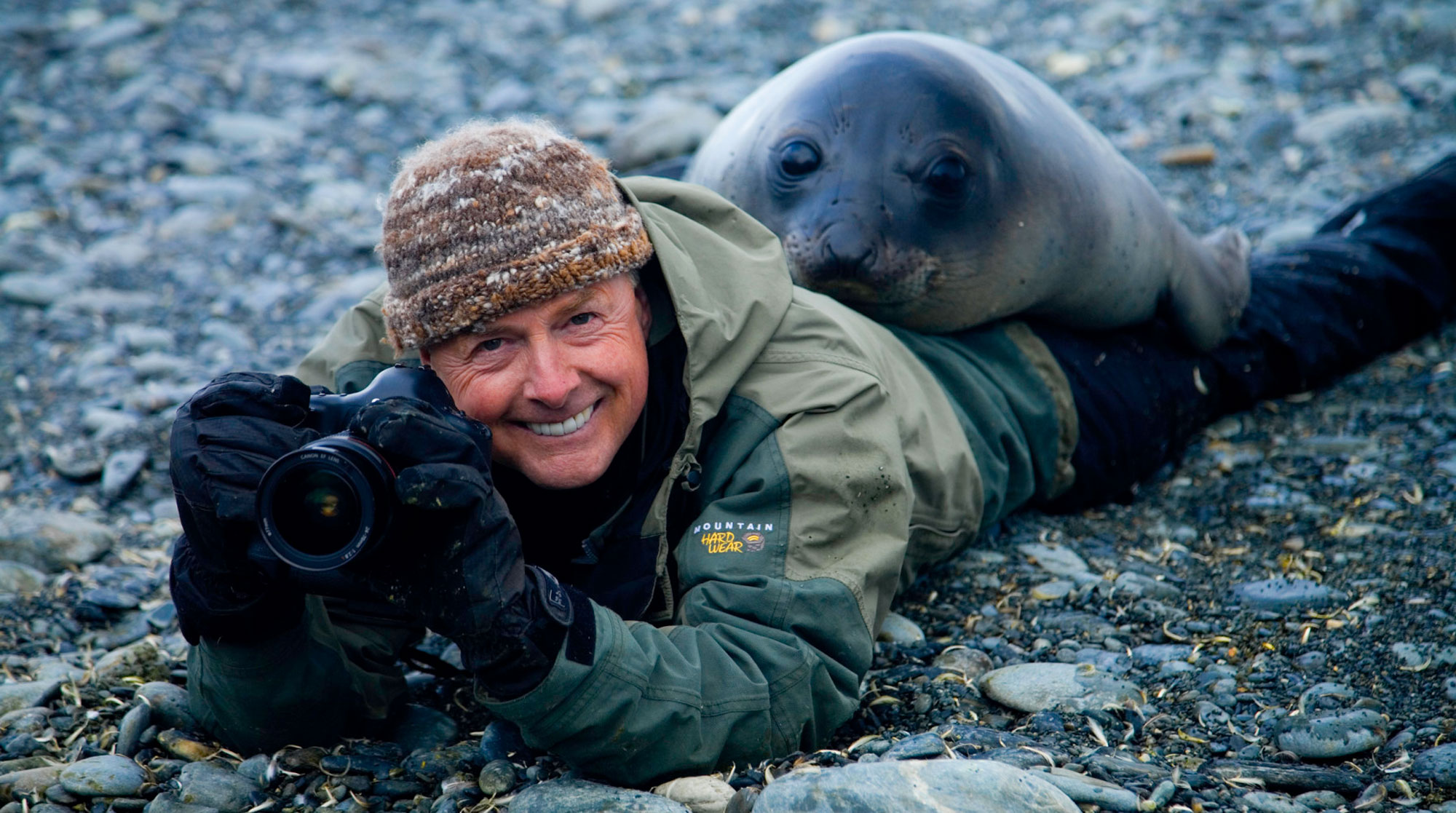
Behind the lens Behind the lens Behind the lens
Ever wondered how Art Wolfe gets the shot? The photographer explains 10 of his favorite photos.
By Art Wolfe | June 13, 2024
Art Wolfe, the recipient of the UW and UWAA’s Alumnus Summa Laude Dignatus award, enthralls us with his images. From culture to landscapes to wild animals in their natural habitats, these are his 10 favorite photos, described by the photographer himself.
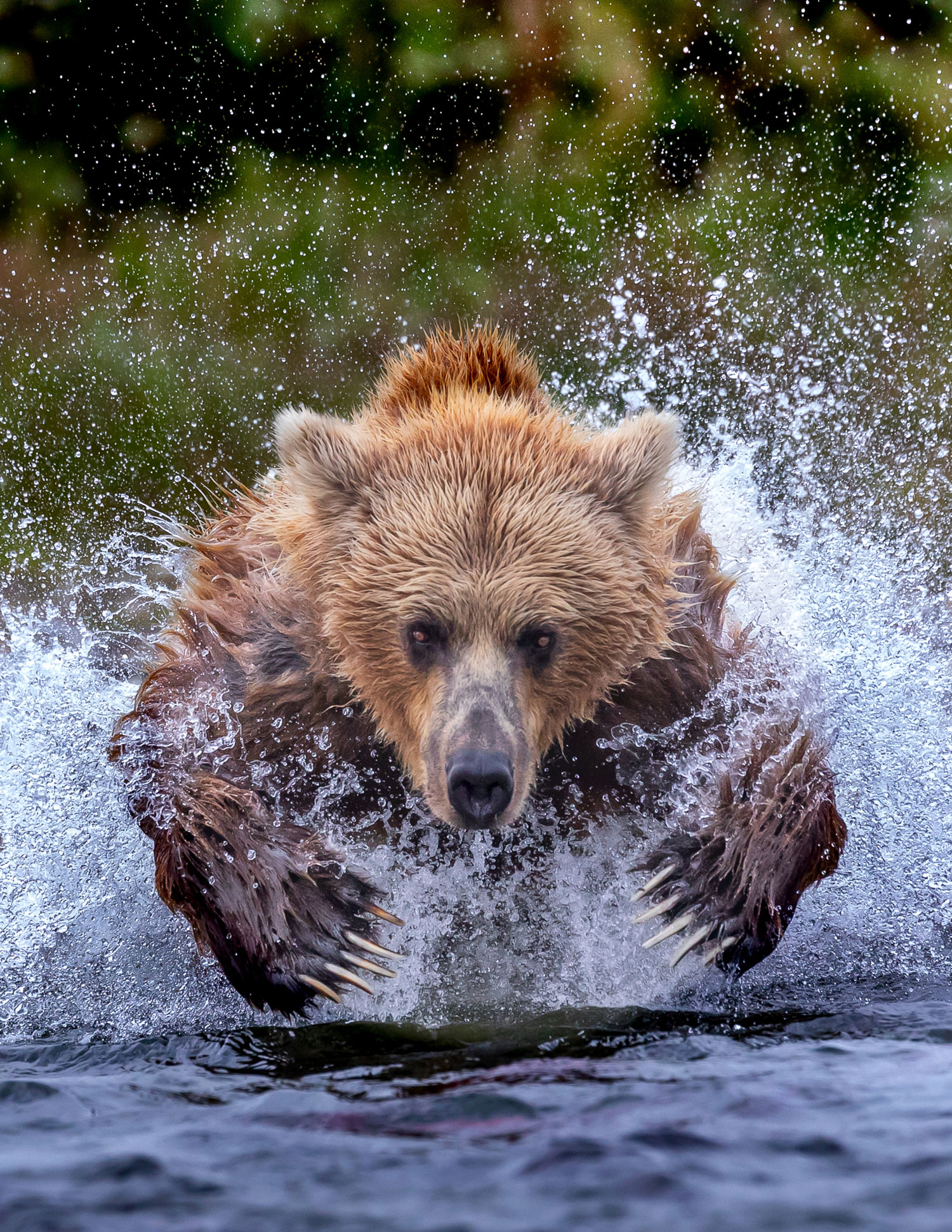
Brown bear (Ursus arctos) leaps after salmon, Katmai National Park, Alaska, USA
When you visit a location often, you begin to recognize the ‘locals.’ I have a history with this bear. She’s a female I’ve photographed in years past, catching fish like none other. This year she had two cubs demanding her attention and was still the best. As the male bears splashed and thrashed at fish, she was like an efficient machine; feeding her cubs was her prime objective. I knew exactly what she would do and focused on her.
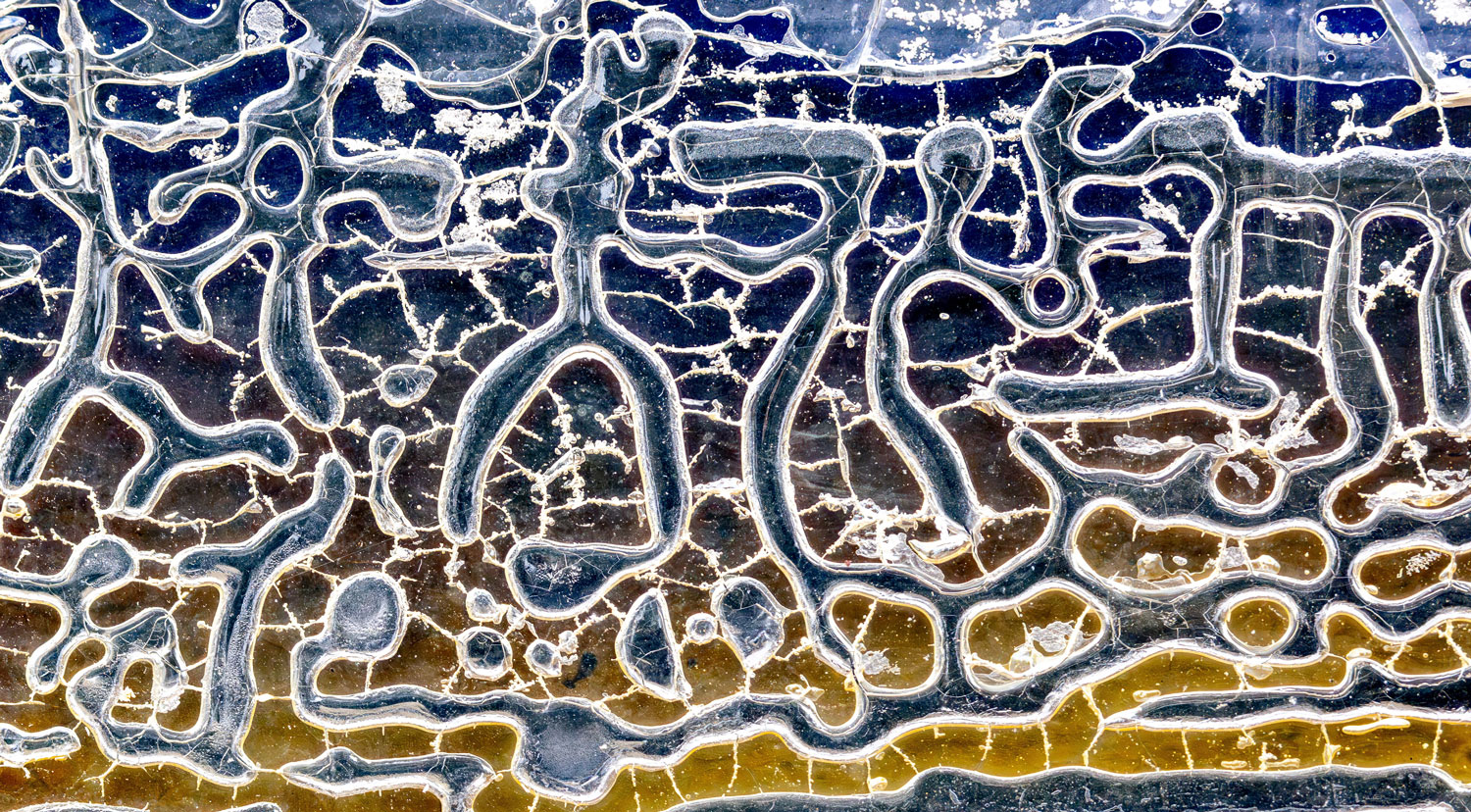
Abstract of deteriorating windshield on old car, Jerome, Arizona
I love photographing degraded environments. The gritty layers of deterioration offer all sorts of dynamic abstracts. This is not about photographing someone else’s art, such as graffiti, but opening your own eye to creative possibilities.
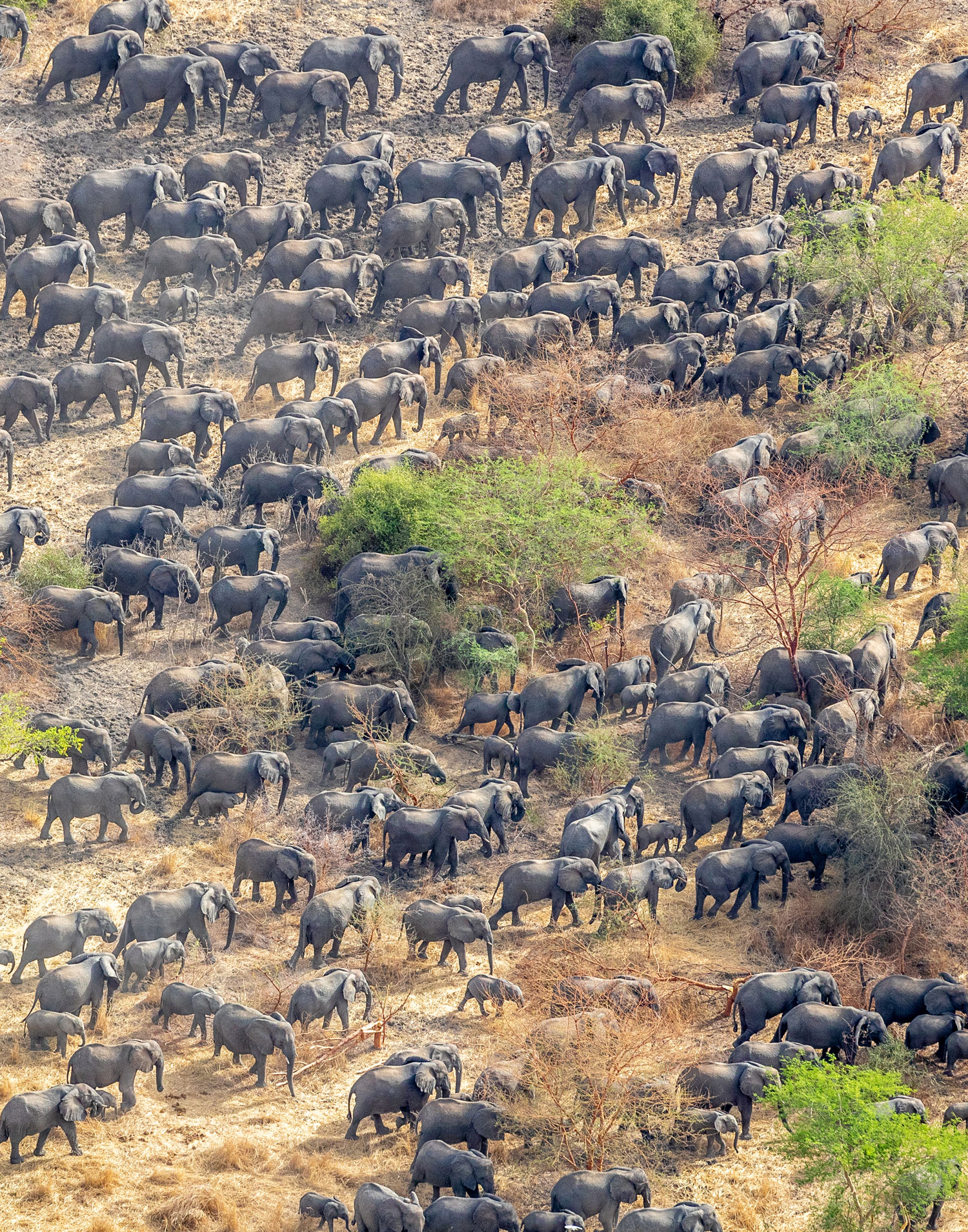
African savanna elephant herd (Loxodonta africana), Zakouma National Park, Guera and Salamat Regions, Chad
Under attack by poachers, elephants in this region mass into megaherds for safety. While this seems like a lot of elephants, it is but a fraction of the numbers that once roamed here. Unable to photograph the herd from the ground, we took to the sky, removing the rear cargo door of the plane and duct-taping ourselves in. I shared the photos at the Zakouma headquarters of African Parks for census counts; the biologists were eager to count calves and it is a hopeful sign that there have been more born in the last few years.

Spiritual Journey, Ganges River, Varanasi, India
This is one of my all-time favorite photos: a stylization of a pilgrim preparing to cross the Gange, something they do every day during the Kumbh Mela, the world’s largest religious gathering. You don’t know if the person is a woman or a man, which helps the viewer see themselves in that place.
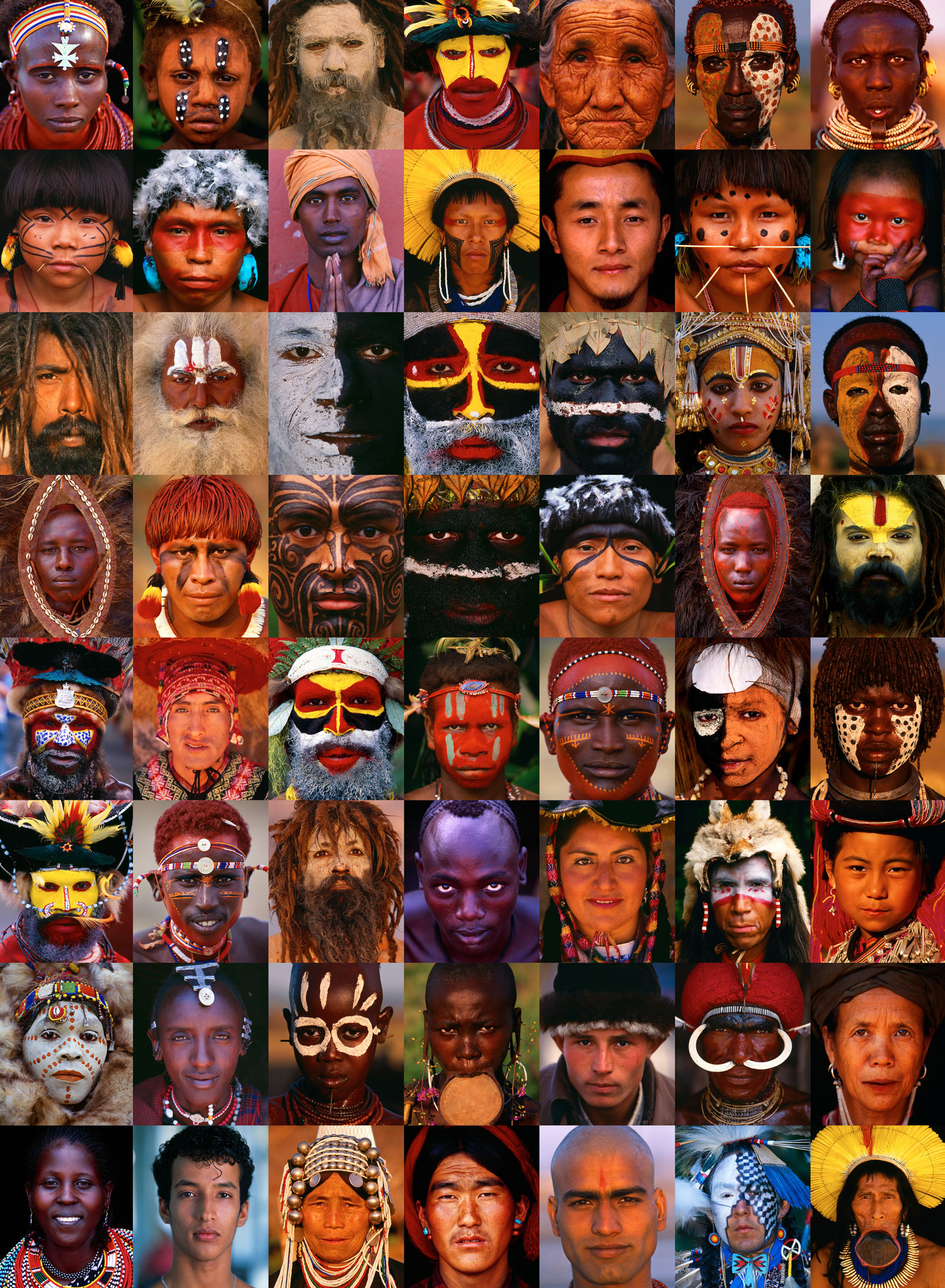
Mosaic of Man
Over the years, I have had great opportunities to photograph many cultures throughout the world. In compiling images for this mosaic, I’ve brought together my favorite portraits of people from all over the world. In all cases, I’ve chosen photos of people fully engaged, looking straight into the camera lens. The variety of adornment is stunning, and by arranging them in this manner I believe I’ve created a very compelling and abstract image.
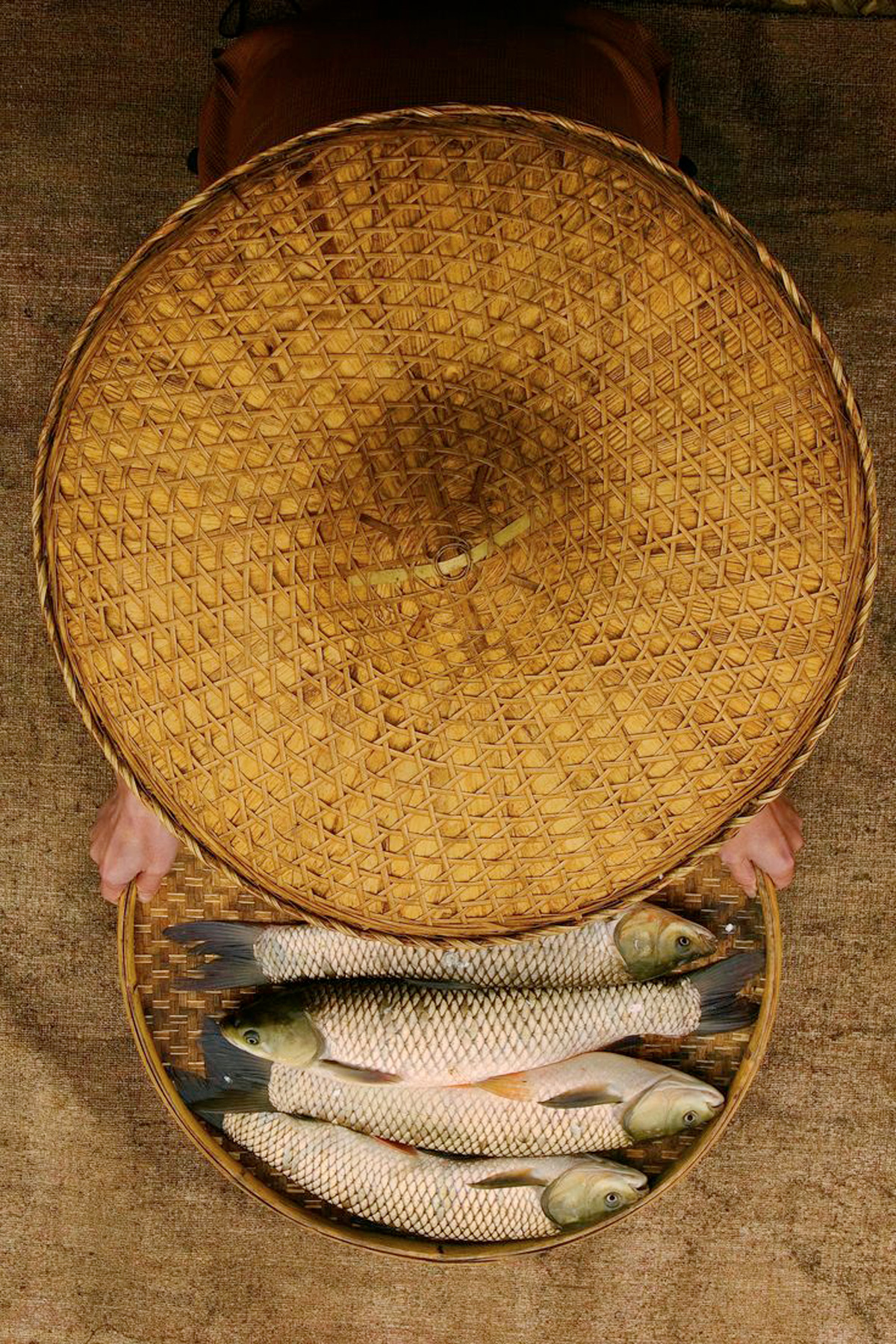
The Catch, Li River, China
Unless you see the hands holding the basket of fish, you hardly realize that this is a person. I love to explore a subject from all angles and here I was able to work the marvelous round shapes of the basket and traditional hand-woven hat into a balanced and visually intriguing composition.

Huang Shan, China
I always believed that Chinese master landscape painters had creative imaginations until I visited Huang Shan and discovered that their paintings were quite faithful to reality. Huang Shan is famous for its countless jagged rock towers, beautiful wind-sculpted pine trees, and seas of swirling clouds. Huang Shan resembles a sumi painting more than a real place.

Human Canvas Clay Study #1
After I finished filming my TV show Art Wolfe’s Travels to the Edge, I needed to do something completely different. This project had been knocking about in my head for years, and while it takes some people aback (Art Wolfe is a fur and feathers guy!), it is a natural evolution of my work and interests. Human Canvas is a marriage of my background in the arts and painting with photography, culture, and natural history.
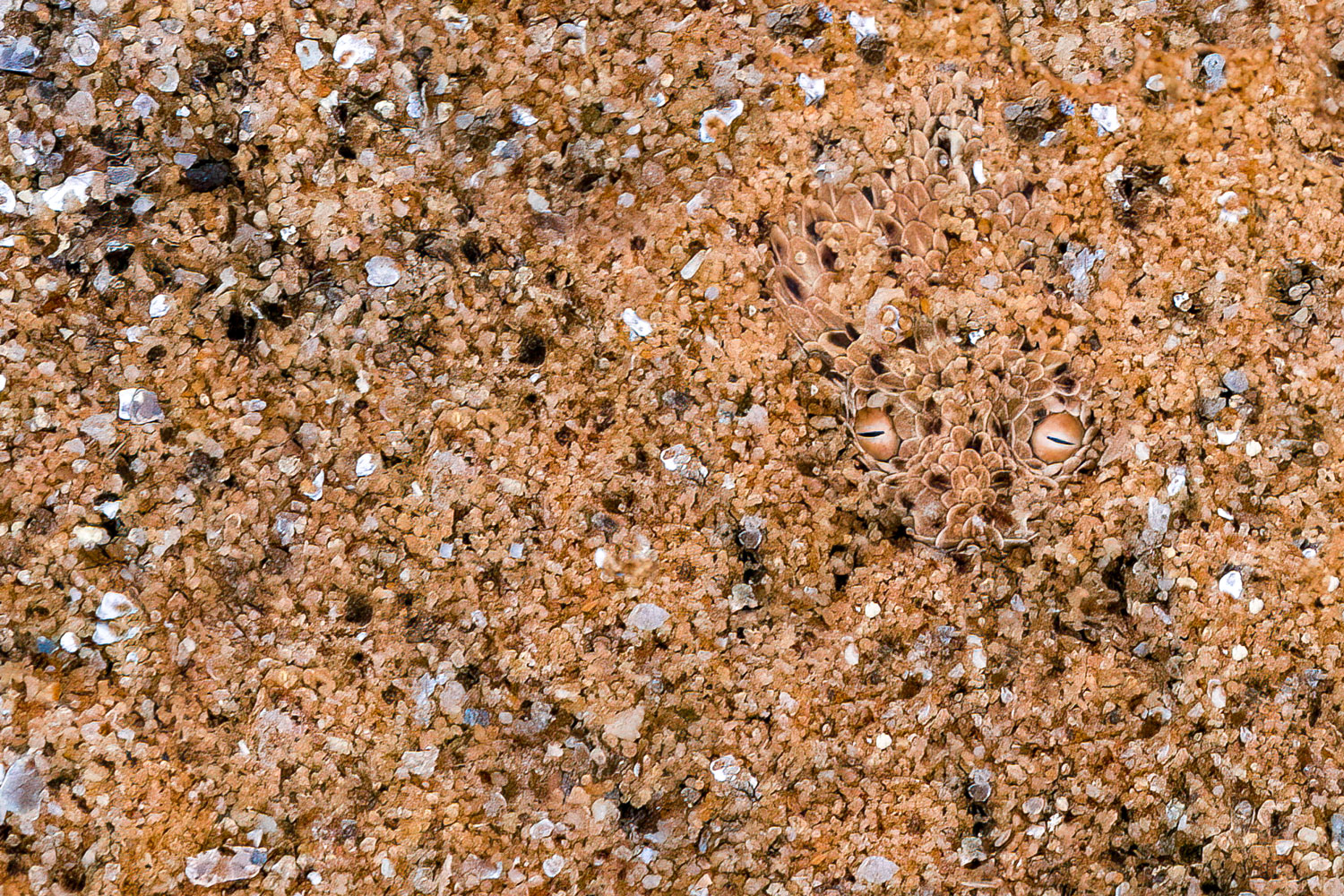
Peringuey’s adder, Namib-Naukluft National Park, Namibia
Seeing wildlife that does not want to be seen and photographing it well is such a challenging subject. I have amassed quite the camouflage collection including this recent photo of a highly venomous viper buried in sand. Its scales are a perfect texture and color match to the quartz sand colored with iron oxide. This image exemplifies an animal’s ability vanishing in plain sight.

Yak train, Rongbuk Valley, Tibet
Back in 1984 I was the photographer on the first Western Everest expedition allowed into China since the Cultural Revolution. While I have shots of Everest and the high Himalaya, creating this image affected me more and sent me on a path to photographing cultures. The yak bells preceded their arrival and then the animals emerged from the freezing fog. This moment, happening now, could have happened a thousand years ago. At that time, though, I could see rapid change coming and indeed it has.